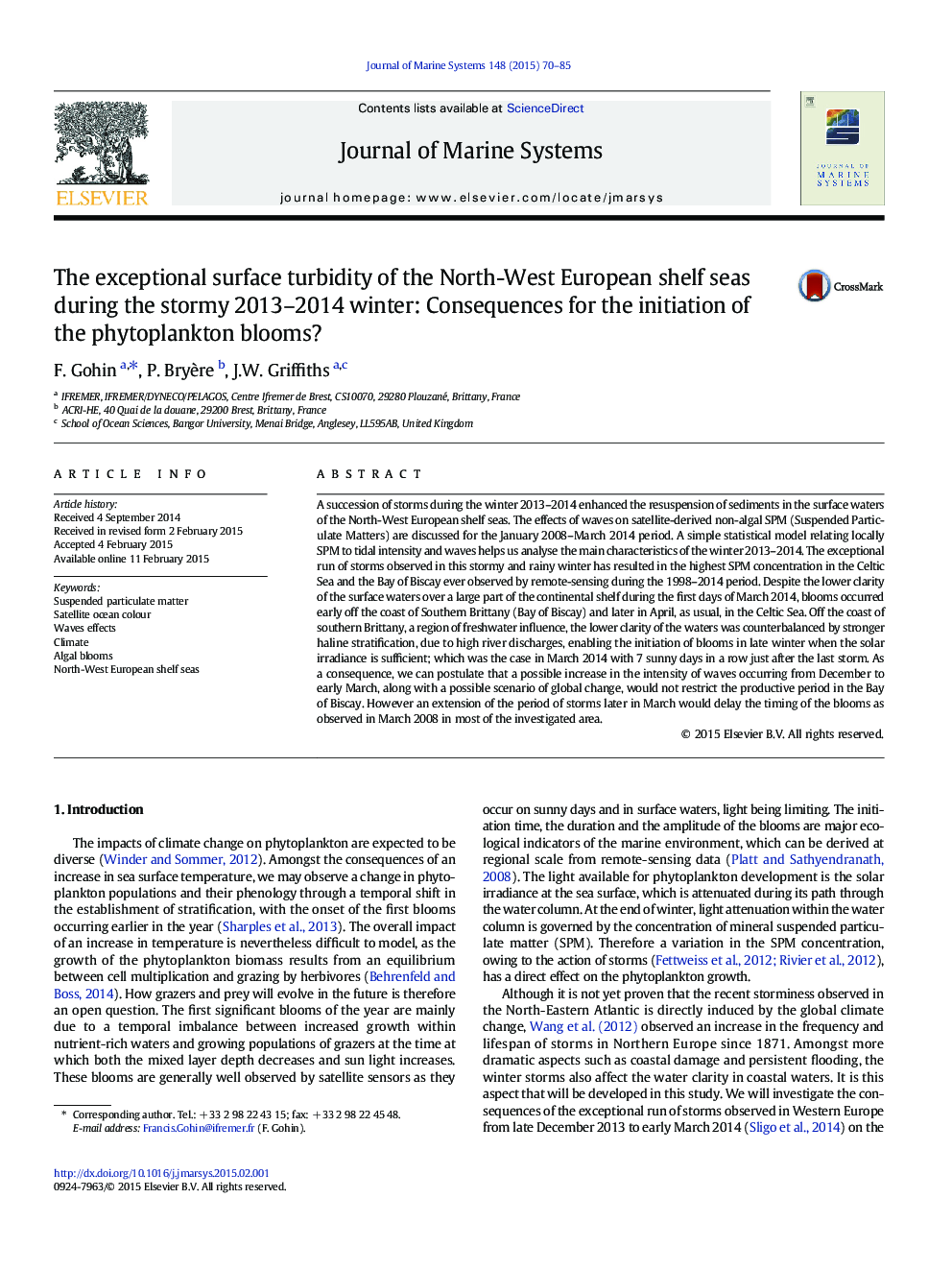| Article ID | Journal | Published Year | Pages | File Type |
|---|---|---|---|---|
| 6386715 | Journal of Marine Systems | 2015 | 16 Pages |
Abstract
A succession of storms during the winter 2013-2014 enhanced the resuspension of sediments in the surface waters of the North-West European shelf seas. The effects of waves on satellite-derived non-algal SPM (Suspended Particulate Matters) are discussed for the January 2008-March 2014 period. A simple statistical model relating locally SPM to tidal intensity and waves helps us analyse the main characteristics of the winter 2013-2014. The exceptional run of storms observed in this stormy and rainy winter has resulted in the highest SPM concentration in the Celtic Sea and the Bay of Biscay ever observed by remote-sensing during the 1998-2014 period. Despite the lower clarity of the surface waters over a large part of the continental shelf during the first days of March 2014, blooms occurred early off the coast of Southern Brittany (Bay of Biscay) and later in April, as usual, in the Celtic Sea. Off the coast of southern Brittany, a region of freshwater influence, the lower clarity of the waters was counterbalanced by stronger haline stratification, due to high river discharges, enabling the initiation of blooms in late winter when the solar irradiance is sufficient; which was the case in March 2014 with 7 sunny days in a row just after the last storm. As a consequence, we can postulate that a possible increase in the intensity of waves occurring from December to early March, along with a possible scenario of global change, would not restrict the productive period in the Bay of Biscay. However an extension of the period of storms later in March would delay the timing of the blooms as observed in March 2008 in most of the investigated area.
Related Topics
Physical Sciences and Engineering
Earth and Planetary Sciences
Oceanography
Authors
F. Gohin, P. Bryère, J.W. Griffiths,
